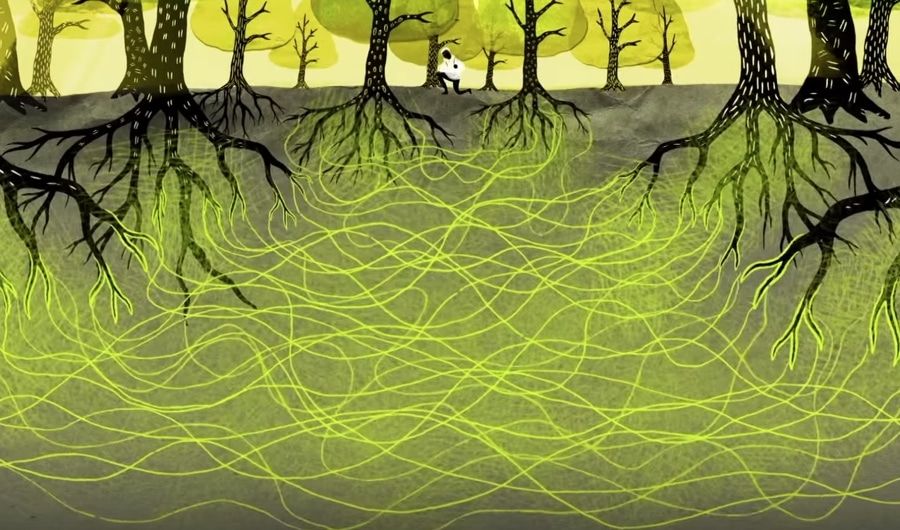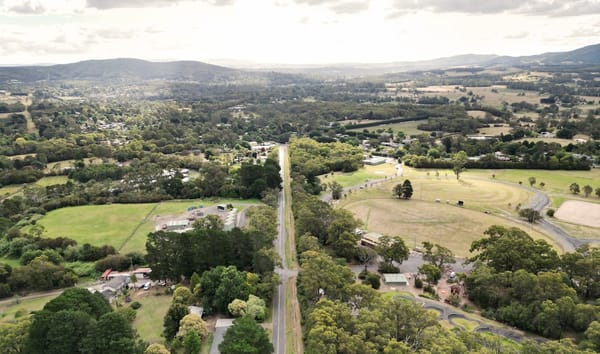On Relational Infrastructure
Exploring the role of relationships, trust and mutualistic approaches to change.

When Suzanne Simard brought to mainstream attention the knowledge of vast underground mycorrhizal networks (which connect trees, grasses and other forms of life throughout grassland and forest ecosystems), the 'wood wide web' changed the perception of these incredible ecosystems for many people.
What if we were able to do the same for the web of human relationships and ways of being that enable us to work together, and make change possible?
This provocation is an idea I've been playing around with for awhile, and has once again cropped up in my new role with Monash Uni (supporting the field of living labs), as a way of trying to name, illuminate and bring focus (and hopefully resources) to the less tangible aspects of how things get done.
As I made inroads in my new role, my take was that really we needed to better understand how to best support, nurture and spread the culture and practice of "labs" ways of working, more so than establishing new labs for different topics.
As this work was initially championed by the head of the 'research infrastructure' team (which would normally be focused on tangible assets like lab benches, microscopes and the myriad of higher-technologies which enable research), I was interested in the framing of these seemingly intangible elements with more materiality.
I began talking about 'social infrastructure' but of course that has a whole frame (link) already, so I turned to 'relational infrastructure'.
Why 'relational infrastructure'? Well to me it felt like a frame which would allow us to explore what those 'intangible elements' were, how we could nurture them and harness their benefits for change work, research, education and more.
As I thought about it, and explored the idea further, I realised that of course friends around the world were already naming aspects of, or bigger concepts of which 'relational infrastructure' might be part of.
Take Civic Square's "Civic Infrastructure", Participatory City's "Neighbourhoods by everyone, for everyone", Cassie Robinson's "Imagination Infrastructures", Thea Snow's "Honouring The Grout", CoLab Dudley's "Social & Imagination Infrastructure", School for Systems Change's "living paradigm where learning is change", Moral Imagination's "Movement of collective imagining", Systems Sanctuary's "Peer-to-peer Cohorts providing refuge for systems leaders" and the good folks at Huddlecraft and their focus on "combining people to unearth and multiply potential". I was also talking a fair bit about the 'relational field' in the past too.
(Update: somehow I forgot to mention the excellent Relationships Project, and the whole social capital space)
Indeed there are a couple of people who have used the term 'relational infrastructure' already, including Debby Mulling, Storper et al (2015), Nonprofit Quarterly, and others who seem to be using it more like social infrastructure, mentioned above.
Clearly I'm not saying anything new, however I do feel like this work connects to a fertile field of constant exploration and experimentation.

Toward a definition?
I don't always think definitions are useful, but if I was trying to articulate what I mean by relational infrastructure, I would probably land on something like:
Relational infrastructure refers to the social connections, interactions, and collective intelligence that underpin a community, network or group's ability to collaborate, solve problems, and drive change. It is an emergent framework of trust, shared values, and common goals that allows individuals, groups, and organizations to work together effectively, pool their resources, and amplify their impact. A strong relational infrastructure can enable organisations and communities to overcome challenges, build resilience, and create sustainable social, economic, and environmental value and outcomes.
Relational infrastructure is only really seen when you know what you're looking for - much like the web of mycelium connecting trees in our forests that make the flow of communication, resources, and mutual intermingling possible, and enable life to thrive.
Expressions of relational infrastructure
One realisation for me whilst trying to articulate this, is that there can be many and varied expressions of this kind of infrastructure.
On a low level, a family or group who are focused on working together may be an expression of relational infrastructure.
However, as I see it these are all types of relational infrastructure too:
- Peer-to-peer journeys and learning crews - topic as focus
- Communities of practice - practice as a focus
- Participatory ecosystems - place as a focus
- Labs - social, living, innovation and more - process as a focus
There are of course, many more.
Why is this useful and what should we do about it?
Much like when we began to understand the web of mycelial connections were fundamental to the health of the forest, illuminating relational infrastructure can help us see why leaving relationship building to happen in the coffee breaks, is a terrible idea.
To take on challenges which rely on collective and collaborative efforts, we need to better understand how to cultivate connection, trust and shared identity. It means we need to understand how relational infrastructure is built, shaped and maintained, whilst acknowledging that it can also be degraded and destroyed.
It means we need to inquire, explore and invent new modes of leveraging, organising and directing the power inherent in relational infrastructure, infusing our relationality with values which are generative, equitable and just.
How to invest in relational infrastructure
I mentioned earlier that as well as seeking to illuminate the idea of an unseen, but vitally important web of relationality - I hope to bring resources to the mix as well.
So how exactly would you invest in something like relational infrastructure?
- Invest in growing the outcomes / impact of an initiative, with an agreement more resources will go into building the relational infrastructure (e.g. creating time in the initiative to step out of "delivery" and take people away for connection time at a different space to support this)
- Hire a team which has experience and capabilities directly relevant to building relational infrastructure, and deploy them as a core which can support groups / teams / a network which have less of those capabilities.
- Invest in a capability building approach, as a whole team or in individuals who have an interest in growing new skills in relational approaches - and seek to create space and mandate for them to practice these skills.
- In organisational settings, recognising the importance of these capabilities (formally and informally), and prioritising the retention of staff who display these skills.
There are many ways to bring more resource to relational infrastructure approaches, many of which are complementary to existing ways of working in organisational and non-organisational settings.
First we need to see that relational infrastructure is there, and that it helps to accelerate many of the ways of being that we need for effective collective action.





